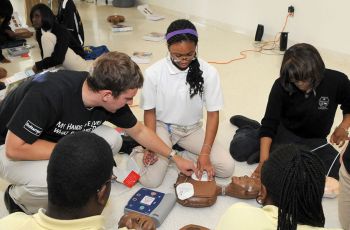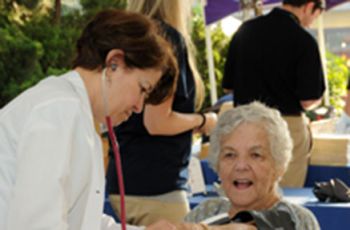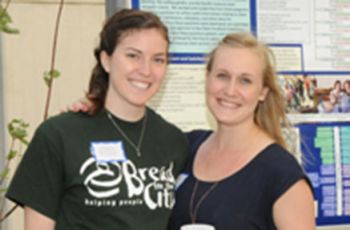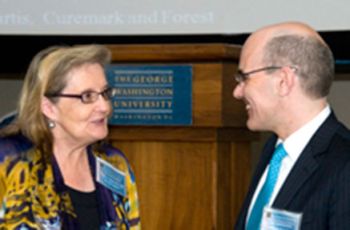Featured News
Two dozen 9th and 10th graders, dressed smartly in their school uniforms, gathered on the cafeteria floor. Each student kneeled in front of a Mini-Anne – an inflatable, portable mannequin – and used the palms of their hands to pump its chest to the beat of the 1970s Bee Gees song “Stayin’ Alive.”
“I’m here for my test!” exclaimed Sammie Whiting-Ellis as she strode below the “Free Stroke Screening” banner that hung across the entrance to the Eye Street Mall outside of the Foggy Bottom Metro station.
Gloria Wilder, M.D., M.P.H., president and CEO of Core Health, arrived more than an hour late to the Interdisciplinary Student Community-Oriented Prevention Enhancement Service’s (ISCOPES) end-of-year celebration at the George Washington University, April 17. Despite leaving her home near Manassas…
In late March, the Centers for Disease Control and Prevention released a report estimating that about one out of every 88 children was diagnosed with an autism spectrum disorder in 2008. That’s a more than 20 percent increase from 2006 and a spike that’s dominated recent headlines nationwide.
Alex Fortenko, M.P.H. ‘11, a first-year medical student in the George Washington University School of Medicine and Health Sciences (SMHS), says it’s a minor miracle when he catches a meal outside of Ross Hall. Between classes, exams, and studying, grocery shopping sinks to the bottom of the to-do…
Match Day was different this year for Elizabeth Wiley, J.D., M.P.H., a fourth-year medical student at The George Washington University School of Medicine and Health Sciences (SMHS).
It’s called “the disease that whispers.” Its incidence is relatively low, its symptoms are easily misattributed, and when it’s discovered, it’s often too late.
It would be easy to spend Match Day Eve — the day before fourth year medical students learn where they will be completing their residency — pacing, nail-biting, playing “what-if,” and indulging other nervous compulsions.
From the diagnosis of acute upper gastrointestinal hemorrhage to the awareness of urban pests and pesticides to the epidemiology of dengue fever in St. Lucia, the topics studied by students and faculty at the George Washington University are not just fascinating— they have the potential to…
Two years of basic sciences, two years of clinical rotations. That’s the standard medical education curriculum, a formula that’s been in place for decades in many American medical schools.



